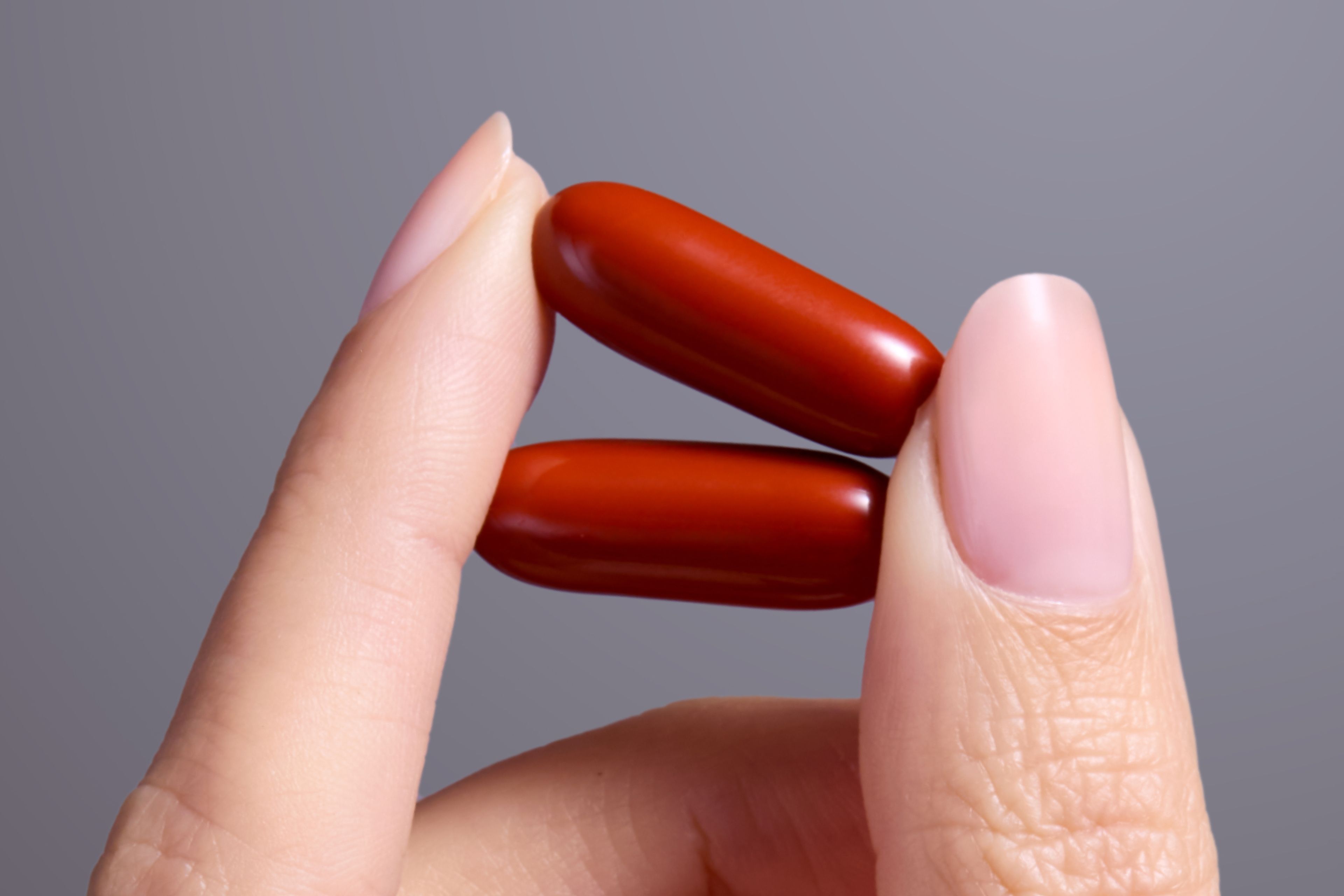Improve Heart Health With Diet and Lifestyle Approaches
Learn how to improve heart health and your risk for heart disease with research-backed diet, exercise, and lifestyle strategies.

What to know
Heart function naturally declines with age, but prioritizing exercise, proper nutrition, and other healthy lifestyle habits can preserve cardiovascular health.
Maintaining mitochondrial health supports optimal heart function and longevity.
Eating a heart-healthy diet, staying active, avoiding smoking and excessive alcohol, and managing stress can significantly reduce the risk of cardiovascular disease.
Consuming nutrient-rich foods like healthy fats, fiber, and antioxidants and opting for heart-friendly cooking methods like grilling and steaming can protect heart health.
Every 33 seconds, someone in the U.S. dies from cardiovascular disease. That’s roughly the time it takes to read this paragraph. It’s the leading cause of death for both men and women—but here’s the kicker: most cases are preventable. The key is focusing on heart-healthy behaviors.
The heart is one of the most energy-demanding organs; after all, it has to beat 24 hours a day, 7 days a week. It requires a steady stream of cellular energy from the mitochondria to keep it ticking.
Finding ways to improve heart health not only reduces the risk of a heart attack but also improves your overall longevity. Let’s explore practical strategies to strengthen your heart, improve energy production, and reduce your risk of cardiovascular disease for optimal longevity.
The Mitochondria-Heart Connection
The heart is one of the most vital organs for health, longevity, and physical fitness. Over time, factors such as oxidative stress, inflammation, and poor lifestyle habits can cause arteries and vessels to become stiff and less resilient. When this happens, there is an increased risk of plaque buildup, the heart pumps less efficiently, and a reduction in blood flow boosts the risk of high blood pressure, stroke, and heart attack.[1]
Mitochondrial dysfunction plays a role in the development of heart disease too. The mitochondria are considered the powerhouses of our cells, supplying ample energy to the cells of the cardiovascular system. With age, our mitochondria lose their efficiency, which has been linked to the development of several forms of heart disease.[2]
Adenosine triphosphate, or ATP, is the primary energy source for the heart and is used to fuel the heart’s activities. [3]To keep beating non-stop, the heart needs a constant supply of ATP. Through their production of ATP, the mitochondria provide cellular energy to our hearts, so it’s essential to keep their function in tip-top shape.
Who’s at Risk of Cardiovascular Disease?
With heart disease being the leading cause of death for men and women globally, adults need to be aware of the risk factors.[4]
Several factors can increase the risks of heart disease, such as age, gender, family history, and lifestyle factors that can influence cellular health.[6] However, while heart disease is common, close to 80% can be prevented through diet and lifestyle changes.[5]
In general, these are the populations at the highest risk for heart disease:[7]
- Men over 45
- Women over 55 who are postmenopausal
- All adults over 65
- Those who are African-American or South Asian descent
- Those with a family history of heart disease
In addition, a history of obesity, diabetes, high blood pressure, high cholesterol, sleep apnea, and kidney disease is associated with a higher prevalence of heart disease.[8]
Older adults over 65 are at the highest risk overall, as heart function naturally declines with age if steps are not taken to preserve its function.[9]
While age and genetic factors can’t be changed, lifestyle factors and pre-existing medical conditions can be managed and modified to decrease risk.
How to Keep the Heart Healthy While Aging
Your diet and lifestyle habits can improve your heart health, even if you have a genetic risk.
The following lifestyle habits and disease states increase the risk for heart disease:[10]
- Unhealthy diet (low in fiber, vitamins, minerals, and healthy nutrients )
- Excess ultra-processed foods (baked goods, snack foods, fast food, added sugar)
- Lack of physical activity
- Smoking
- Excessive alcohol intake
- Chronic stress
- High blood pressure (hypertension)
- High cholesterol
- Diabetes
- Obesity
- Poor sleep quality
Depending on your age and gender, there are specific action steps you can take now to prioritize your heart health. Let’s explore how different demographics can take targeted action to support heart health.

Men 45 and Older
- Enjoy a heart-healthy diet
Foods for heart health include plenty of healthy fats from fish, nuts, olive oil, and fiber-containing fruits and veggies. In addition, limit foods high in saturated fats and sodium and avoid trans fats as much as possible.
- Stay active
Exercise and heart health go hand-in-hand. Get moving with a mix of strength training & cardio, with a goal of at least 150 minutes of moderate-intensity exercise per week. [11]This can resemble a 50/50 split of cardio exercises such as brisk walking, swimming, biking, or jogging, as well as weight training and body weight exercises, depending on your fitness level.

Women 55 and Over (postmenopause)
- Focus on a nutritious diet
Fiber and heart-healthy fats should be part of a post-menopausal heart-healthy diet. Paired with a low sodium diet, this will help to keep cholesterol and blood pressure levels in check while keeping inflammation at bay.
- Consider adding soy to your diet
In addition, early research shows a link between consuming soy-containing foods and a reduced risk of cardiovascular disease, particularly in postmenopausal women.[13] This may be due to their potential to reduce cholesterol levels. While more research is needed, consuming naturally containing soy foods up to 2-3 times per day, such as soymilk, tofu, and soybeans like edamame, may be beneficial.[12]
- Prioritize strength training
Both endurance and strength training are essential for women, but an emphasis on strength training can help to counter the effects menopause has on muscle health. Strength training is good for the heart. Research suggests that people who strength train have a 17% lower risk of cardiovascular disease than those who do.[14]
Cardio serves its own purpose, such as acting to improve your VO2 max. This measures your heart’s strength and aerobic capacity, and engaging in regular cardio can boost your capacity.
Just like for men, at least 150 minutes per week of total exercise is recommended.
Older Adults 65 and Over
All of the above tips still apply, with a few special caveats:
- Stay active with lower-impact exercises
Walking, swimming, or yoga helps keep the heart strong without straining joints.
- Manage medications properly
Regularly take prescribed medications for blood pressure, cholesterol, and diabetes as directed. This can apply to any age group, but those over 65 may be more likely to be taking multiple medications.
Additional Tips for Everyone
- Prioritize regular check-ups
- Get your cholesterol, triglycerides, and blood pressure checked annually. If anything is abnormal, ask for more frequent check-ups.
- Quit smoking if you’re a smoker
- Limit alcohol as much as possible
- Manage stress levels
- Get adequate sleep

Eat Your Heart Out
We all know we should be focusing on healthy fats and fiber for heart health, but let's examine some underrated but super powerful ways to boost heart health:
Eat more healthy fats
Replacing saturated and trans fats with unsaturated fats can protect the heart. [15]Portion control should still be practiced, as all high-fat foods are still high in calories. Enjoy plenty of:
- Fatty fish: salmon, sardines, mackerel, and herring.
- Avocados
- Olive oil or avocado oil
- Walnuts, flaxseeds, chia seeds, almonds, and pistachios
Boost your fiber intake
More fiber, especially soluble fiber that binds to cholesterol, is associated with a reduced risk of heart disease. Eat more of these foods to bump up your fiber intake to the recommended 25-30 grams a day.[16]
- Legumes and beans like lentils, kidney beans and chickpeas
- Whole grains, including oats, barley and quinoa
- Fruit like berries, apples and pomegranates
- Leafy greens, including spinach, kale, and Swiss chard
- Cruciferous veggies like broccoli, cauliflower, and asparagus
Enjoy dark chocolate in moderation
Research suggests indulging in dark chocolate can also support heart health due to its rich flavonoid content. People who eat dark chocolate tend to have lower levels of blood pressure, better lipid levels and overall risk of heart disease.[17]
To get the most benefits without overdoing it on sugar, stick to 1 to 2 ounces[18]. Choose dark chocolate that is at least 70% cacao to get the most benefit.[19]
Beets & beet greens
Beets are a heart health super food due to their high nitrate content. The body converts nitrates into nitric oxide, helping to relax blood vessels, improve circulation, and lower blood pressure. Studies suggest that regular beet consumption may enhance endothelial function, reducing the risk of hypertension and cardiovascular disease.
And don’t throw away the greens. Beet greens are just as healthy, packed with potassium and magnesium, two key minerals that support a healthy heart rhythm and reduce stroke risk.
Garlic
Garlic has long been valued for its cardiovascular benefits, primarily due to its high content of allicin, a sulfur-containing compound that supports heart health. Studies suggest that regular garlic consumption can help lower blood pressure, reduce LDL cholesterol, and improve arterial function. Additionally, garlic has anti-inflammatory and blood-thinning properties, which may help reduce the risk of clot formation and improve circulation.[20]
Heart Healthy Lifestyle - Key to a Longer Life
Working to improve your heart health is the foundation of a long and vibrant life. The core of heart health lies in the strength and efficiency of your mitochondria. These tiny powerhouses fuel your heart’s nonstop work, and by prioritizing habits that support mitochondrial function—such as eating a nutrient-rich diet, staying active, managing stress, and avoiding harmful lifestyle choices—you can enhance your heart’s resilience as you age.
By taking proactive steps to nourish your body and support cellular energy production, you can optimize heart health, reduce the risk of cardiovascular disease, and enjoy a healthier, more energized life for years to come.
Always remember to be your own advocate and remain proactive in seeking help from your medical team.
Authors

Dietitian-Nutritionist, and Health Content Writer

Reviewed by
Senior Manager of Nutrition Affairs
References
- ↑
Vasan RS, Pan S, Xanthakis V, et al. Arterial Stiffness and Long-Term Risk of Health Outcomes: The Framingham Heart Study. Hypertension. 2022;79(5):1045-1056. doi:10.1161/HYPERTENSIONAHA.121.18776
- ↑
Atici AE, Crother TR, Noval Rivas M. Mitochondrial quality control in health and cardiovascular diseases. Front Cell Dev Biol. 2023;11:1290046. Published 2023 Nov 6. doi:10.3389/fcell.2023.1290046
- ↑
Lopaschuk GD, Karwi QG, Tian R, Wende AR, Abel ED. Cardiac energy metabolism in heart failure. Circulation Research. 2021;128(10):1487-1513. doi:https://doi.org/10.1161/CIRCRESAHA.121.318241
- ↑
"Heart Disease Facts." Centers for Disease Control and Prevention, www.cdc.gov/heart-disease/data-research/facts-stats/index.html. Accessed 7 Feb. 2025.
- ↑
Preventing Heart Disease. The Nutrition Source. Published May 9, 2014. https://nutritionsource.hsph.harvard.edu/disease-prevention/cardiovascular-disease/preventing-cvd/
- ↑
Di Cesare M, Perel P, Taylor S, et al. The Heart of the World. Glob Heart. 2024;19(1):11. Published 2024 Jan 25. doi:10.5334/gh.1288
- ↑
CDC. Heart Disease Risk Factors. Heart Disease. Published April 24, 2024. https://www.cdc.gov/heart-disease/risk-factors/index.html
- ↑
CDC. Heart Disease Risk Factors. Heart Disease. Published April 24, 2024. https://www.cdc.gov/heart-disease/risk-factors/index.html
- ↑
Rodgers JL, Jones J, Bolleddu SI, et al. Cardiovascular Risks Associated with Gender and Aging. J Cardiovasc Dev Dis. 2019;6(2):19. Published 2019 Apr 27. doi:10.3390/jcdd6020019
- ↑
CDC. Heart Disease Risk Factors. Heart Disease. Published April 24, 2024. https://www.cdc.gov/heart-disease/risk-factors/index.html
- ↑
CDC. Physical Activity for Adults: An Overview. Physical Activity Basics. Published December 20, 2023. https://www.cdc.gov/physical-activity-basics/guidelines/adults.html
- ↑
Zampelas A. The Effects of Soy and its Components on Risk Factors and End Points of Cardiovascular Diseases. Nutrients. 2019;11(11):2621. Published 2019 Nov 1. doi:10.3390/nu11112621
- ↑
Zampelas A. The Effects of Soy and its Components on Risk Factors and End Points of Cardiovascular Diseases. Nutrients. 2019;11(11):2621. Published 2019 Nov 1. doi:10.3390/nu11112621
- ↑
Williams MA, Haskell WL, Ades PA, Amsterdam EA, Bittner V, Franklin BA, Gulanick M, Laing ST, Stewart KJ; American Heart Association Council on Clinical Cardiology; American Heart Association Council on Nutrition, Physical Activity, and Metabolism. Resistance exercise in individuals with and without cardiovascular disease: 2007 update: a scientific statement from the American Heart Association Council on Clinical Cardiology and Council on Nutrition, Physical Activity, and Metabolism. Circulation. 2007 Jul 31;116(5):572-84. doi: 10.1161/CIRCULATIONAHA.107.185214. Epub 2007 Jul 16. PMID: 17638929.
- ↑
Lichtenstein AH. Dietary Fat and Cardiovascular Disease: Ebb and Flow Over the Last Half Century. Adv Nutr. 2019;10(Suppl_4):S332-S339. doi:10.1093/advances/nmz024
- ↑
Soliman GA. Dietary Fiber, Atherosclerosis, and Cardiovascular Disease. Nutrients. 2019;11(5):1155. Published 2019 May 23. doi:10.3390/nu11051155
- ↑
Yang, J., Zhou, J., Yang, J. et al. Dark chocolate intake and cardiovascular diseases: a Mendelian randomization study. Sci Rep 14, 968 (2024). https://doi.org/10.1038/s41598-023-50351-6
- ↑
Yang, J., Zhou, J., Yang, J. et al. Dark chocolate intake and cardiovascular diseases: a Mendelian randomization study. Sci Rep 14, 968 (2024). https://doi.org/10.1038/s41598-023-50351-6
- ↑
Berk, L., Bruhjell, K., Peters, W., Bastian, P., Lohman, E., Bains, G., Arevalo, J., & Cole, S. (2018). Dark chocolate (70% cacao) effects human gene expression: Cacao regulates cellular immune response, neural signaling, and sensory perception. The FASEB Journal, 32. https://doi.org/10.1096/fasebj.2018.32.1_supplement.755.1.
- ↑
Rahman K, Lowe GM. Garlic and cardiovascular disease: a critical review. J Nutr. 2006 Mar;136(3 Suppl):736S-740S. doi: 10.1093/jn/136.3.736S. PMID: 16484553.









